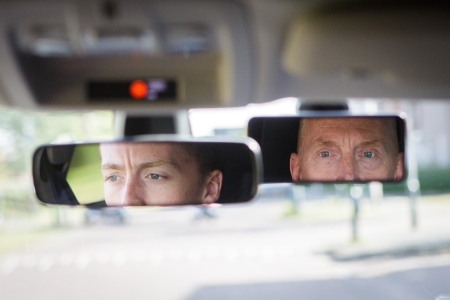Measures often mentioned to improve driver training in the Netherlands are the introduction of full graduated licencing, training hazard perception and comprehensive advanced training courses for novice drivers, focusing on traffic insight and self-awareness. Below these measures and their prospective effectiveness are described.
Graduated licencing
The Netherlands have already introduced two phases of the graduated driving licence (also see the question What is a graduated driving licence and how effective is it?):
- a learner phase (accompanied driving: 2toDrive) during which, after licence acquisition, a novice driver can learn to drive while being accompanied;
- a provisional licence, which implies a novice driver is allowed to drive independently while adhering to stricter rules.
The introduction of an intermediate phase, which would imply that adolescents are only allowed to drive in relatively safe conditions (for instance no alcohol, no peer passengers) might result in risk reduction for novice drivers [49]. This phase would allow the novice driver more time to practise and to gain experience in traffic conditions that are not inherently risk-increasing. Road safety effects of graduated licencing are mainly to be expected as a consequence of postponed exposure to hazardous road conditions and of accompanied driving; there is less strong evidence to suggest that adolescents improve their driving skills on account of graduated licencing [42].
Training hazard perception
Training hazard perception may improve observation behaviour of novice drivers and, thus, reduce crash risk (also see the question How useful is hazard perception as part of driver training and driving test?). Interactive training programs for laptops or tablets are available for training hazard perception. Taking a training course could be stimulated more often. This training course should ideally also have a feedback component, which would result in more awareness about one’s own hazard perception in relation to other road users [50].
Aditional novice training courses
In a European context, quite some attention has been paid to additional training courses after licence acquisition (also see the question How useful is additional training after licence acquisition? ). Many of these courses were not shown to have any effect on crash risk for novice drivers. One of the reasons for this lack of effect is that training may result in overconfidence. A comprehensive advanced training course focusing on traffic insight and self-awareness could have a positive impact. The advanced training course in Austria is an example of such a course. It is, however, a rather intense course which requires novice drivers to return for a training day six times in two years. The course offers driving skill analysis, group discussion and road safety training [31]. In addition, a general training for adolescents in order to reduce risk behaviour and increase resilience (also paying attention to road safety behaviour) may also have a positive impact on crash risk for novice drivers in the Netherlands [33].
